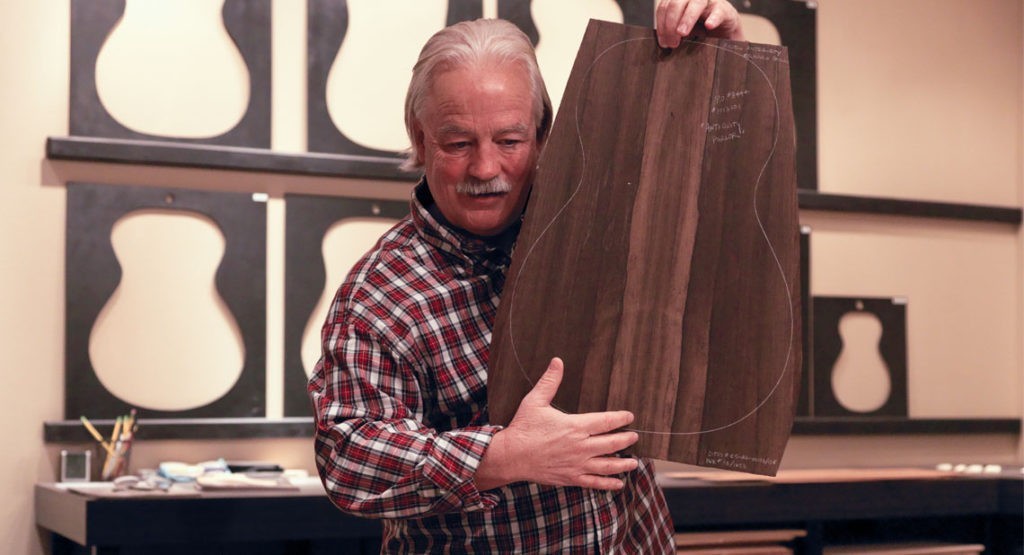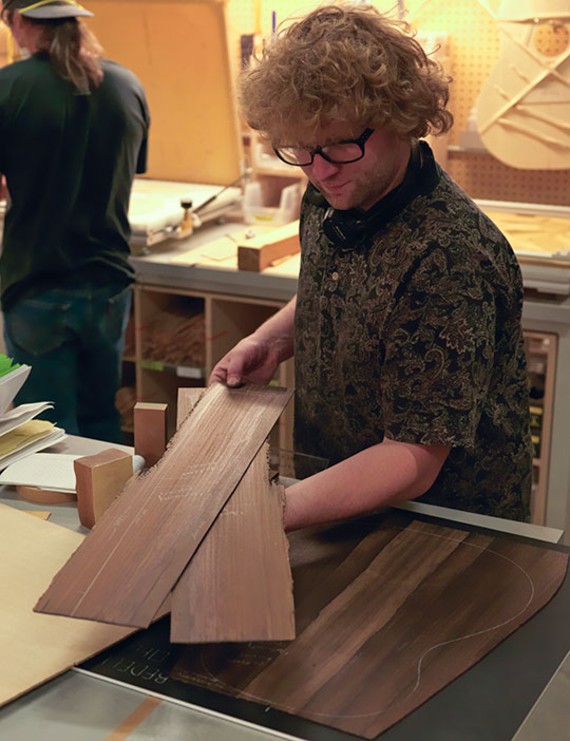Tonewood Talk: Milagro Brazilian Rosewood

Three years ago we built our first guitar using a Brazilian rosewood set from the Milagro tree. It was magical, the finest sounding and most beautiful looking guitar we had crafted at Bedell Guitars. What was different?
The Milagro tree grew near Linhares, in the state of Espiritu Santo, Brazil. Growing on a hillside in this mountainous area, there was little retention of water resulting in slow growth and the unique spider webbing – therefore the name Milagro (miracle). From radiocarbon analysis, we know that the tree was over 350 years old when it died. Having been discovered partially buried in the Atlantic Coastal Forest, did the gorgeous grain coloration result from the boggy soil? We do not know for sure, but the different density and unique appearance of the Milagro suggest mineral deposits and the possibility it had settled on the forest floor for some time.
At about the same time Sitka spruce seedlings began their fight for survival in the old-growth Tongass forest on Prince of Wales Island, Alaska. It took 400 years for these trees to earn 275 feet in height and 30 feet in diameter. What life experiences did this forest endure to make the wood such resonant soundboards? We can only speculate. Growing less than eight inches a year on average, the incredible strength to weight ratio provides ideal dynamics for thin soundboards, yet with the muscle to achieve the ideal deflection.
Marrying 400-year-old Sitka spruce tops with 350-year-old Milagro Brazilian rosewood backs has proven to be a synergistic wonder. But we have not left the final sound to chance. We know that every single set of tonewood is unique. There is significant variance in the density, and resulting frequency in our various Milagro and Sitka sets. So we sound profile every top and back and adjust their thinness accordingly. We insist on approximately 30 HZ separation with backs delivering a higher frequency than the tops. Then once the bracing and tone bars have been applied to the tops, we Hand Tune each one – tapping, reading the frequency on the computer and shaving off wood until the top is in perfect tune. As we fine tune each guitar, we are handcrafting the finest sounding instruments we have ever made.
Until now, this story has been all about how we achieve the music. It is also about the story of the elegant design. Going back over 300 years to study stringed instrument designs, we sought to meld the hand inlay art of European artisans to the period when the trees were nurtured. Replicating an organic feel of vines and leaves, highlighted against the vintage toner on the top.
Acoustic guitars marry the organic magic of nature with the calling of music within us. It is our voices, our words, our playing on our all natural guitar that brings out the sincerity of our music and satisfaction of our music being us.

